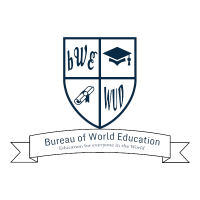
Academics may also help by sharing their very own path to greater training. Whether or not they have been first-generation college students, enrolled immediately after highschool, acquired their diploma after army service or went again to high school after one other profession, it advantages college students to listen to these tales. “Some academics are actually good at that. They will share their journey. They will have issues up of their room, their school memorabilia or issues like that,” Brown stated. These efforts may also help college students see that they’re surrounded by adults who’ve been to varsity.
The fundamentals aren’t primary
In her small teams for first-generation college students, Brown breaks down every step of the school admissions course of. That features explaining the variations between two-year, four-year and technical faculties, describing completely different majors and levels, strolling college students by means of functions and FAFSA completion and explaining the several types of monetary assist. Informally, academics and different adults in faculties can demystify the method by speaking about their very own experiences selecting and making use of to high schools, she stated. Educators shouldn’t assume that college students perceive the vocabulary and phases they’re mentioning (“FAFSA,” “frequent app,” “main,” and so on.), however clarify them as they might any unfamiliar topic.
“Numerous instances these college students do not have anyone to ask,” Brown stated. “Have a plan for these youngsters. They want extra, interval. Numerous instances it is us or nothing.”
What occurs after the acceptance letter
When school acceptance letters begin arriving in February, “Oh it is nothing however glitz and glam,” Brown stated. “However the place is it by Could? Gone.” Educators have to be speaking about what occurs after the acceptance letter, too, she stated. “OK, you bought in. Now what?”
Someplace between 10 and 40% of scholars who intend to enroll in school fail to do so, based on the Strategic Knowledge Venture at Harvard’s Heart for Training Coverage Analysis. This phenomenon is called “summer melt,” and college students from decrease revenue ranges are extra inclined to it. Very like the entire steps it takes to get into school, Brown stated the unfamiliar terrain between school acceptance and campus move-in could be a barrier for first-generation college students. “Typically they actually assume they only present up,” she stated. To assist, educators can join first-generation college students to monetary assist counselors to go over award packages, stroll college students by means of registering for courses and test in about orientation.
Typically it takes much more hands-on involvement. Brown, for instance, took her scholar who acquired the athletic scholarship buying in the course of the summer season in order that he would know what to purchase for his dorm room. She additionally stated she was ready to drive him to campus if wanted, however his dad did that.
Whereas getting college students to campus could be the end line for highschool counselors and academics, Brown stated the work ought to begin lengthy earlier than that. She inspired center faculty employees to determine and encourage potential first-generation school college students, too. She stated to “simply cease and drop gems,” equivalent to telling them about majors or organizations associated to their pursuits. “The extra you may get to them earlier than they begin constructing a transcript, you might be serving to us and also you’re serving to them.”
Source link
















